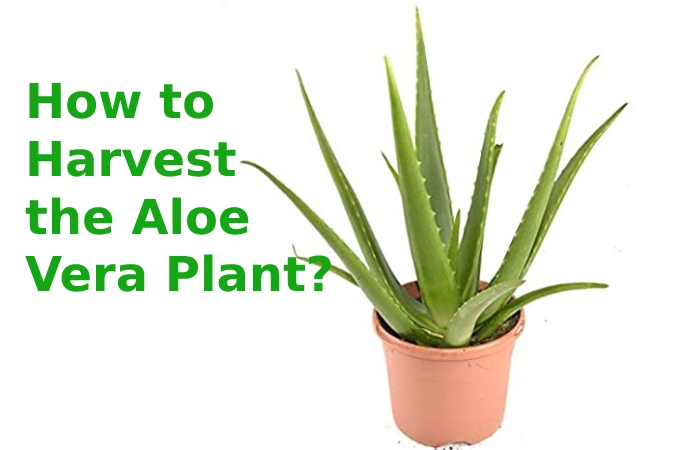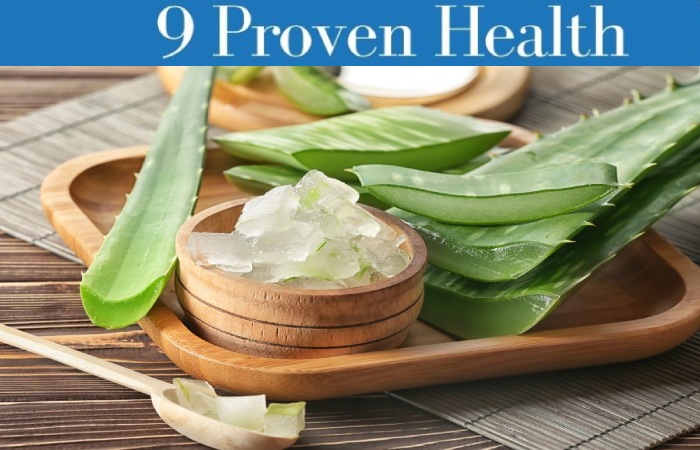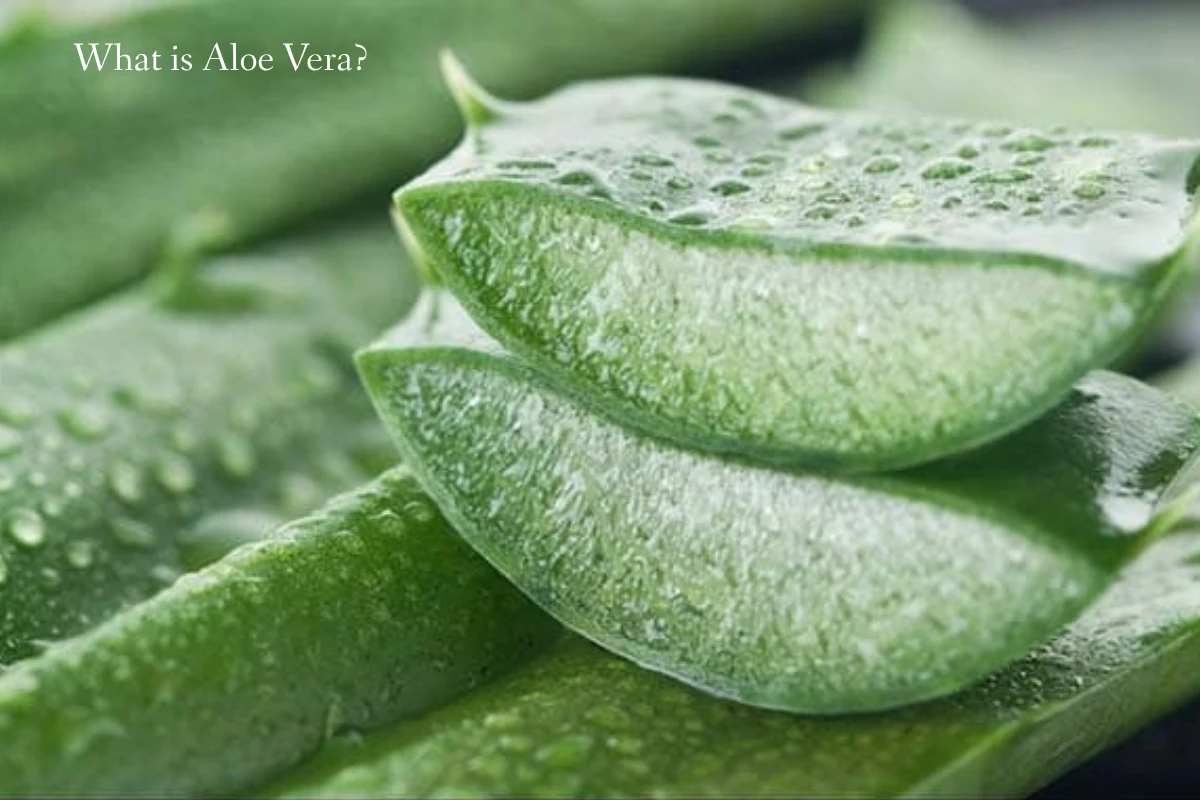Table of Contents
What is Aloe Vera?
Aloe vera is a medicinal plant used to treat various health conditions for thousands of years. It’s usually safe to use vera directly from the plant or buy it in the gel method.
Aloe vera creams, gels, and ointments cover the transparent gel found in aloe vera leaves. These products can apply topically to treat various skin conditions. Aloe is sold in capsules or in liquid form to take internally to promote health and wellness.
How to Harvest the Aloe Vera Plant?

It is relatively easy to harvest an aloe plant for freezing and juice. You will need a mature plant that is at least a few years old. This ensures a higher concentration of lively ingredients.
You will also want to wait a few weeks before cutting the leaves of the same plant. You may need to have a few plants in the rotation if you plan to harvest aloe frequently.
To harvest aloe vera plant for gel and juice:
- Remove 3-4 leaves at a time, selecting thick leaves from the outer parts of the plant.
- Make sure the leaves are healthy and free from mold or damage.
- Cut them close to the stem. Most of the helpful nutrients find at the base of the leaves.
- Avoid the roots.
- Wash and dry the leaves.
- Trim the thorny edges with a utility knife.
- With a knife or your fingers, separate the inside gel from the outside of the blade. The inner gel is the part of the aloe that you will be using.
- Let the yellow sap drain from the leaf. It’s aloe vera latex. If you plan to use latex, you can catch it in a container. If you don’t plan on wearing the latex, you can drop it.
- Cut the aloe vera gel into slices or cubes.
- If you want a smooth aloe gel, after separating the aloe from the outside of the leaf, you can put the aloe in a blender and then strain the substance to remove the pulp.
Types of Aloe Vera
There are hundreds of types and varieties of aloe vera. Known aloe species with mainly ornamental use are:
- African aloe
- Tree aloe
- Smeared aloe
- Diverse aloe
- Dichotomy aloe
The most popular species of aloe is Aloe vera. We all know about its healing properties. Many varieties of aloe vera have small thorns at the edges of the leaf, white spots on the leaves, and during the 4th year of cultivation, develop a characteristic orange flowering shoot.
Ingredients of Aloe Vera
Aloe vera is considered one of the most biologically active species of aloe. It also provides many vitamins and minerals vital for the proper development and functioning of all our body systems.
Let’s see in more detail what active ingredients the aloe vera contains:
- Antioxidant vitamins A, C, and E, vitamin B12, folic acid, and essential choline.
- Eight enzymes include alkaline phosphatase, amylase, bradykinesia, carboxypeptidase, catalase, cellulase, lipase, and peroxidase.
- Minerals like calcium, copper, selenium, chromium, manganese, magnesium, potassium, sodium, and zinc.
- It provides 12 carbon ions, i.e., compounds known as laxatives. Among them are aloin and emodin, which act as analgesics, antibacterials, and anti-active.
- It contains four fatty acids: cholesterol, campesterol, beta-sitosterol, and lupeol, all of which provide anti-inflammatory effects.
- It also contains some hormones called auxins that help heal wounds, while they also have anti-inflammatory properties.
- And also, it also contains sugars such as monosaccharides (glucose and fructose) and polysaccharides.
The 9 Proven Health Benefits of Aloe Vera

1. Soothes, Rashes, and Skin Irritation
- There are too many references to the role of local use of aloe vera in skin diseases and the treatment of wound healing.
- Aloe vera extract report provides rapid skin relief and regeneration from itching and burning associated with severe radiation dermatitis.
2. Heals Burns
- The gel from the aloe vera has a protective effect against radiation damage to the skin.
- The U.S. Food and Drug Administration approved the use of aloe vera ointment as a drug to treat burns to the skin.
- Because when aloe jelly uses in burns, it prevents UV suppression so that the area can heal faster.
3. Heals Herpes
- When it is applied to a herpes wound a few times a day, it helps speed up the healing process.
- It is also safe when consumed orally, so you don’t have to worry about swallowing this natural remedy.
- Aloe vera has anti-virus and anti-inflammatory properties, accelerating healing and reducing pain associated with herpes or any other sores in the mouth.
- The amino acids and vitamins B1, B2, B6, and C contained in aloe vera are also beneficial.
- One of the benefits of vitamin B6 is that it acts as a natural pain treatment. It creates the necessary antibodies that our immune system uses to protect us.
4. Moisturizes Hair and Scalp
- And also, it is a necessary natural treatment for dry hair or itching on the scalp.
- It has nutritional properties, and the countless vitamins and minerals keep your hair strong and healthy.
- Due to anti-microbial and anti-fungal properties, it also helps in dandruff.
- Gel enzymes can help the scalp eliminate dead cells and promote skin regeneration around hair follicles.
- And also, it is an authentic way to keep your scalp clean from bacteria and skin reactions.
5. Treat’s Constipation
- It uses of latex as a laxative has much research. Carboninons present in latex create a potent laxative that increases the content of intestinal water.
- In addition, it stimulates mucus secretion and increases intestinal peristaltic, i.e., contractions that break down food and mix juice.
- In a controlled study of 28 healthy adults, aloe vera showed a laxative effect compared to a placebo. This drug was more substantial than the stimulant laxative phenolphthalein, it making a natural constipation relief treatment.
6. Helps Digestion
- Due to its anti-inflammatory and laxative components, another advantage of aloe vera is its ability to help digestion.
- Aloe vera juice normalizes acid or alkaline action and balances the body’s pH. Reduces yeast formation, encourages digestive bacteria and regulates bowel treatment.
7. Boosts the Immune System
- The enzymes present in the Aloe Vera break down food proteins into amino acids. It also converts enzymes into fuel for every cell in our body, allowing cells to function correctly.
- It is significant for building our immune system without causing allergic reactions or side effects.
- One reason is constantly gaining popularity: it is a perfectly natural solution and is now considered a miracle plant!
8. Provides Antioxidants and Reduces Inflammation
- We all know that inflammation is the root of most diseases.
- And also, it offers a significant number of vitamins and minerals. These help to reduce inflammation and fight damage from free radicals.
- And also, it can naturally cure acne and eczema, as it helps in the skin’s healing process.
9. Treats Diabetes
- Some research in humans and animals suggests that it can relieve chronic hyperglycemia and disturbed lipid profile.
- These are common among people with diabetes and are important risk factors for cardiovascular complications.
- For this, add natural treatment for diabetes to the list of benefits of aloe.
- It would help if you kept in mind is that from the third year onwards, the therapeutic properties of aloe are effective. When the plant is already mature, and its jelly has reached the desired level of ripening.
- Aloe is juicy and stores a lot of water in its leaves but should water at least two or three times a month. In winter, it becomes somewhat dormant, and in this period, you should also water it very little.
- And also, a plant of Aloe vera in-home, it’s an easy and cheap way to get to know all these fantastic benefits!
Conclusion
Aloe vera can be called a miracle plant. It is beneficial for most skin problems, also helps in digestion and more other things. Including this plant in your lifestyle is a great option.

